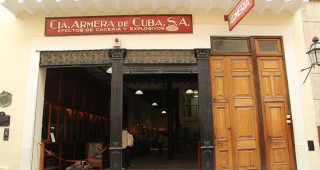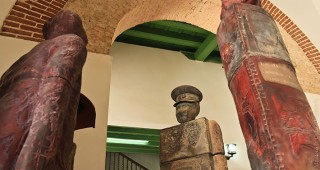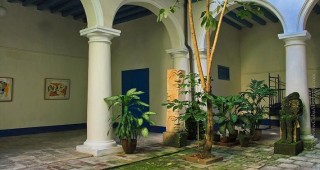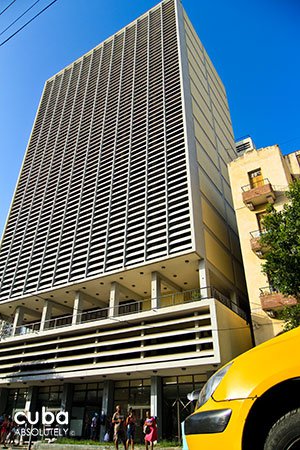In 1953, architect Antonio Quintana won the competition for the design of a building which would house doctors’ offices, stores and other public spaces. The use of brise-soleil, popularized by the French architect Le Corbusier and readily assimilated by Cuban architects and from other countries in the Americas, especially, Brazil, given its practical applicability in tropical climates for both shading and ventilation purposes, is an outstanding feature of this building. The brise-soleil here also offers an aesthetically pleasing appearance, which some experts claim was influenced by the skyscraper project designed by Le Corbusier for Algiers. The vestibule features El dolor humano, a mural painting by the Cuban painter Mariano Rodríguez. Today, the building is home to the Faculty of Economics of the University of Havana, as well as the Talía Theatre and the L Art Gallery, the latter two on the ground floor. The building was awarded Gold Medal by the National School of Architects in 1956.

Edificio Rodríguez Vázquez LH  2
2
This 1941 building repeats the structure of lines that emphasize verticality and includes a small two story-tower. Initially known as the Rodríguez Vázquez Building, it included two cinemas, a café-re …
 Art DecoGaliano entre Neptuno y Concordia
Art DecoGaliano entre Neptuno y Concordia 
Memorial a los Estudiantes de Medicina LH  2
2
Inaugurated in 1890, this memorial is a shrine to eight medical students who were executed by firing squad on November 27, 1871, after being falsely accused of desecrating the tomb of Spanish journali …

Instituto de Segunda Enseñanza de La Habana LH  2
2
The Institute of Secondary Education of Havana was founded in 1863 and originally located on Calle Obispo. It was later moved to this site in 1924 as part of the construction program for the area in t …
 EclecticAdmission: n-aZulueta e/ San José y Teniente Rey, Habana Vieja
EclecticAdmission: n-aZulueta e/ San José y Teniente Rey, Habana Vieja 
Museo Yoruba de Cuba LH  2
2
Created by, and housed in the headquarters of, the Asociación Cultural Yoruba de Cuba, this museum is dedicated to santería and features sculptures representing the different Afro-Cuban orishas (saint …

Museo Armería 9 de Abril LH  2
2
The Museo Armería 9 de Abril displays a large collection of firearms and bladed weapons spanning the 18th to the 20th centuries. It occupies the former Compañía Armera de Cuba, a private gun shop that …

Museo Nacional de la Cerámica Contemporánea Cubana (Casa de Francisco Aguilera Basabe) LH  2
2
Housed within Casa de Francisco Aguilera Basabe, a two-story building built in 1728, this museum exhibits Cuban art pottery from 1950 to the present day on the top floor, while the ground floor has a …
 ColonialAdmission: FreeOpen: 9am-5pm Tues-SunMercaderes esq. a Amargura, Habana Vieja
ColonialAdmission: FreeOpen: 9am-5pm Tues-SunMercaderes esq. a Amargura, Habana Vieja 
Cementerio de Espada LH  2
2
First called Cementerio General de La Habana, the Cementerio de Espada was built after the Spanish authorities issued a Royal Edict banning burials in temples because it was considered unhygienic. The …

Fuente de Neptuno LH  2
2
The Fuente de Neptuno (Fountain of Neptune) was imported from Italy. Besides its ornamental function, it also supplied water to three boats at the same time, for which large iron rings were placed for …

Avenida de Carlos III (Ave. Salvador Allende) LH  2
2
This street was built by order of Governor Miguel de Tacón in 1836 and connects the intersection of Reina and Belascoaín streets to the Castillo del Príncipe. It was originally named Paseo de Tacón. L …

Casa Oswaldo Guayasamín LH  2
2
This institution honors Ecuadorian painter Oswaldo Guayasamín (1919-1999), a dedicated socialist, supporter of the Cuban Revolution, and close friend to Fidel Castro. It’s located in an 18th-century m …





